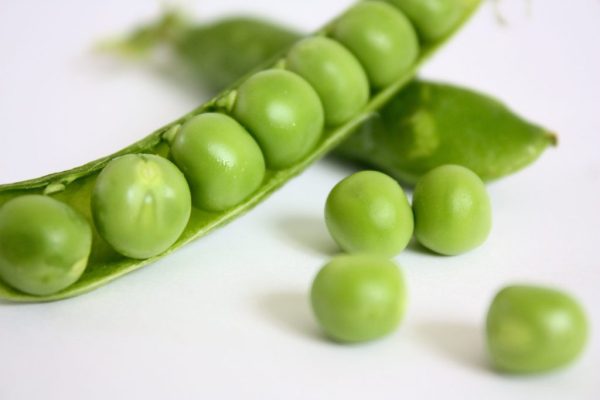
Pea protein is an emerging high-quality protein in recent years. It not only has high nutritional value, but also has the characteristics of low toxicity and low allergenicity. Separating and purifying yellow pea crude protein can obtain isolated protein with high protein content and less anti-nutritional factors. After enzymatic hydrolysis of yellow pea protein, yellow pea polypeptide composed of various polypeptide molecules can be obtained.
Yellow pea has a high protein content (85%) and contains 8 essential amino acids necessary for the human body. Yellow pea protein is a valuable protein source that has the potential to replace soy protein and improve the nutritional value of food.
Pea protein has good solubility and is easy for human body to absorb. Pea protein does not contain estrogen and is not a major allergen, so it is suitable for all kinds of people. Pea protein or its hydrolyzed peptides have important health effects, such as anti-oxidation, lowering blood pressure, anti-inflammation, lowering cholesterol and regulating intestinal flora.
Nutrition Facts of Pea Protein
Pea protein accounts for 22% to 25% of the dry weight of peas, of which the proportion of albumin is 18% to 25%, and the proportion of globulin is 55% to 65%. Albumin contains more tryptophan, lysine, threonine and other sulfur-containing amino acids; globulin contains more arginine, phenylalanine, leucine and isoleucine. The biological value (BV) of pea protein is 48%-64%, and the efficiency ratio (PER) is 0.6-1.2, which is higher than that of soybean. On the whole, the amino acid composition of pea protein is relatively average, close to the standard model recommended by FAO/WHO, so it is a better source of essential amino acids.
01. Food protein source for infants and children
Pea protein extracted from pea has the effect of reducing gastroenteritis and improving the bioavailability of minerals, and is especially suitable as a food protein source for infants; pea protein has low phytic acid content, which has little effect on the absorption of iron, and It does not produce allergic reactions and can be used as the best source of protein in baby food formulas. The bioactive peptide isolated from yellow pea has good anti-adhesion ability and can be used as a functional component to resist Helicobacter pylori infection in infants and children.
02. Anti-oxidation
Pea protein hydrolyzate has antioxidant properties. Pea protein hydrolyzate and its separate components have the ability to inhibit the oxidation of linoleic acid, which can help inhibit the occurrence and development of chronic diseases caused by cell oxidation. Pea oligopeptides can maintain strong antioxidant activity after pepsin and trypsin digestion.
03. Antibacterial
In the test, it was found that the hydrolyzate of pea protein isolate papain has antibacterial effect on both Gram-negative bacteria and Gram-positive bacteria, that is, it has a relatively broad-spectrum antibacterial effect. The ability of pea antimicrobial peptides to Gram-negative bacteria is significantly stronger than that of Gram-positive bacteria, and the antibacterial effect on Staphylococcus aureus is the most obvious.
04. Promote the growth of probiotics
The effect of the enzymatic hydrolyzate of pea protein hydrolyzed by alkaline protease on the growth of 17 common probiotics was studied. Studies have confirmed that pea protein hydrolyzate can significantly promote the growth of probiotics, increase the survival rate of probiotics, and shorten the production time of probiotics.
Glycosylation of pea protein can improve the intestinal environment and promote the growth of probiotics in the intestinal tract, especially bifidobacteria and lactic acid bacteria, and promote the production of more short-chain fatty acids (lactic acid and vinyl acetate, propionate butyrate), which helps maintain the intestinal tract.
05. Lower blood pressure, lower cholesterol, prevent cardiovascular and cerebrovascular diseases
Pea protein is used as raw material for hydrolysis to obtain peptides with (angiotensin-converting enzyme) ACE inhibitory activity. Long-term use can help treat high blood pressure without side effects and has no effect on normal blood pressure.
06. Improve immune suppression
After pea protein is hydrolyzed, its hydrolyzate can significantly inhibit the NO produced by macrophages, and its amount is as high as 20%. Experiments on mice by Zhang Minjia and others proved that a certain dose of pea peptide can improve the immune function of CTX-induced immunosuppressive mice.
07. Alleviate insulin resistance
Pea peptide has a certain relieving effect on the formation of insulin resistance in liver cells.
